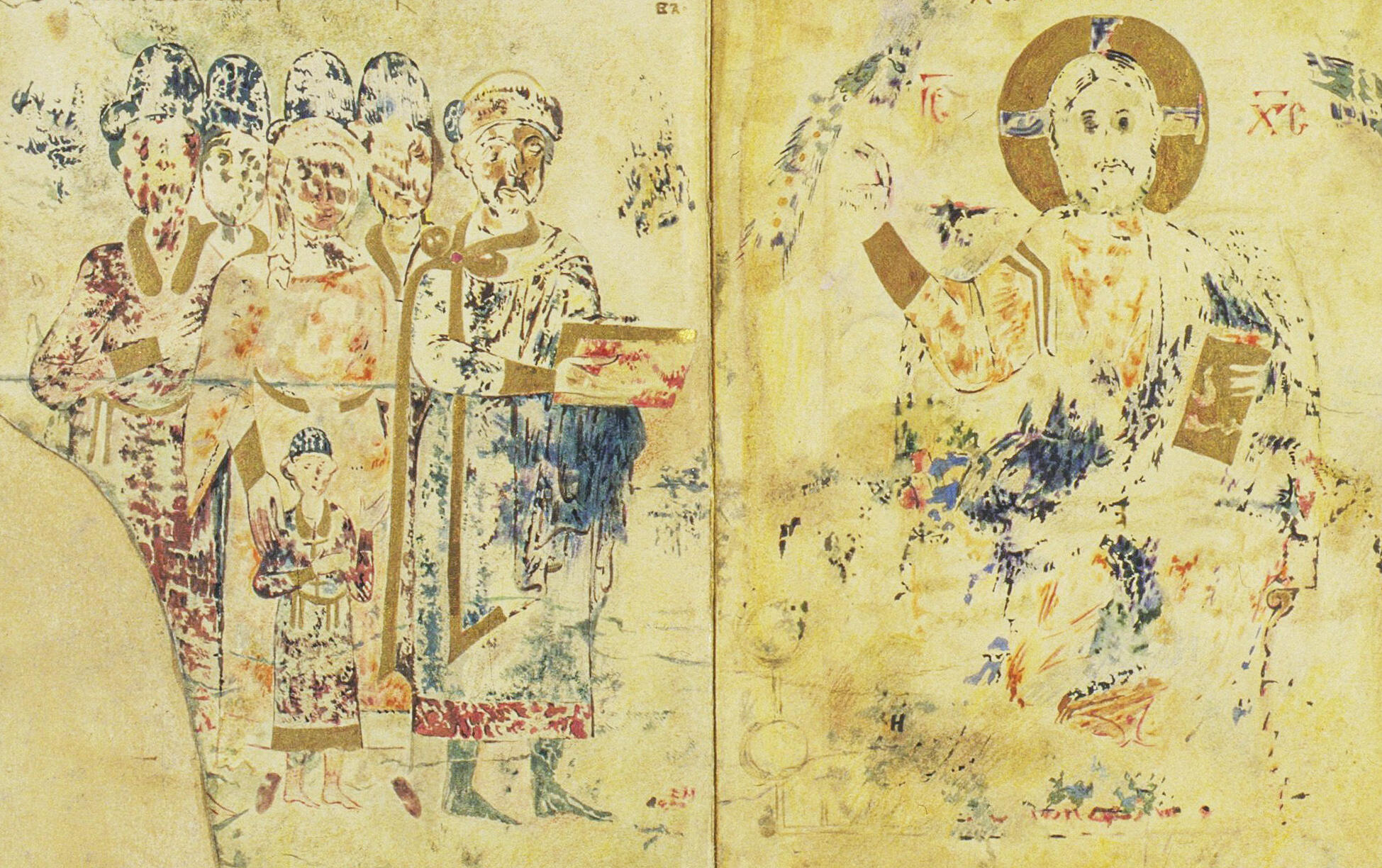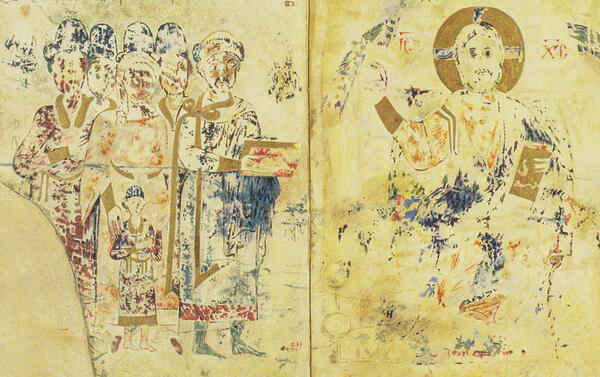The “Izbornik of Svyatoslav” is the second oldest accurately dated Old Russian manuscript of the 11th century. It was discovered in 1817 in the library of the Resurrection Monastery near Moscow during an archaeographic expedition led by Pavel Stroyev and Konstantin Kalaydovich. Presently, it is the New Jerusalem Monastery in the city of Istra, Moscow Oblast.
The Izbornik is dated to 1073. Researchers have established that it was copied from an old Bulgarian manuscript commissioned by Yaroslav the Wise’s eldest son, Prince Izyaslav of Kiev. The original document belonged to the Bulgarian tsar Simeon and was a Slavic translation of a Greek-Byzantine anthology, which had been written at the beginning of the 11th century in Bulgaria.
As a result of princely feuds, the “Izbornik” got into the hands of the new Kiev grand prince Svyatoslav, Izyaslav’s brother. Svyatoslav commissioned an artist to create two miniatures, one depicting his family — “The Family of Svyatoslav” and “The Savior Enthroned”. By his order, these drawings were placed at the beginning of the text. Two scribes worked on the document, but the name of only one of them, dyak Ioann (sexton Ioann), is known.
In total, the manuscript is made up of 266 sheets. The text on each of them is arranged in two columns and is written in ustav — a form of manuscript Cyrillic. The letters were written without a tilt, separately from each other, which gave them a clear outline — it seems as if each sign was inscribed into a square.
The pages of the Izbornik are decorated with colored miniatures, initials, headpieces that separate the chapters. Zodiac signs are drawn in the margins.
The document includes 363 articles. The main part is “Questions and Responses” by Anastasius Sinaita, abbot of the Saint Catherine’s Monastery on Mount Sinai, who lived in the 7th century AD. His works are reflections on faith, righteous life and morality. In addition, the Izbornik includes translations of articles on philosophy, philology and natural science. They were written by famous scientists of antiquity: Aristotle, Nemesius, Maximus the Confessor. Another part of the book consists of lists of literature banned by the church, as well as Roman, Jewish and Macedonian calendars.
The Izbornik is dated to 1073. Researchers have established that it was copied from an old Bulgarian manuscript commissioned by Yaroslav the Wise’s eldest son, Prince Izyaslav of Kiev. The original document belonged to the Bulgarian tsar Simeon and was a Slavic translation of a Greek-Byzantine anthology, which had been written at the beginning of the 11th century in Bulgaria.
As a result of princely feuds, the “Izbornik” got into the hands of the new Kiev grand prince Svyatoslav, Izyaslav’s brother. Svyatoslav commissioned an artist to create two miniatures, one depicting his family — “The Family of Svyatoslav” and “The Savior Enthroned”. By his order, these drawings were placed at the beginning of the text. Two scribes worked on the document, but the name of only one of them, dyak Ioann (sexton Ioann), is known.
In total, the manuscript is made up of 266 sheets. The text on each of them is arranged in two columns and is written in ustav — a form of manuscript Cyrillic. The letters were written without a tilt, separately from each other, which gave them a clear outline — it seems as if each sign was inscribed into a square.
The pages of the Izbornik are decorated with colored miniatures, initials, headpieces that separate the chapters. Zodiac signs are drawn in the margins.
The document includes 363 articles. The main part is “Questions and Responses” by Anastasius Sinaita, abbot of the Saint Catherine’s Monastery on Mount Sinai, who lived in the 7th century AD. His works are reflections on faith, righteous life and morality. In addition, the Izbornik includes translations of articles on philosophy, philology and natural science. They were written by famous scientists of antiquity: Aristotle, Nemesius, Maximus the Confessor. Another part of the book consists of lists of literature banned by the church, as well as Roman, Jewish and Macedonian calendars.


